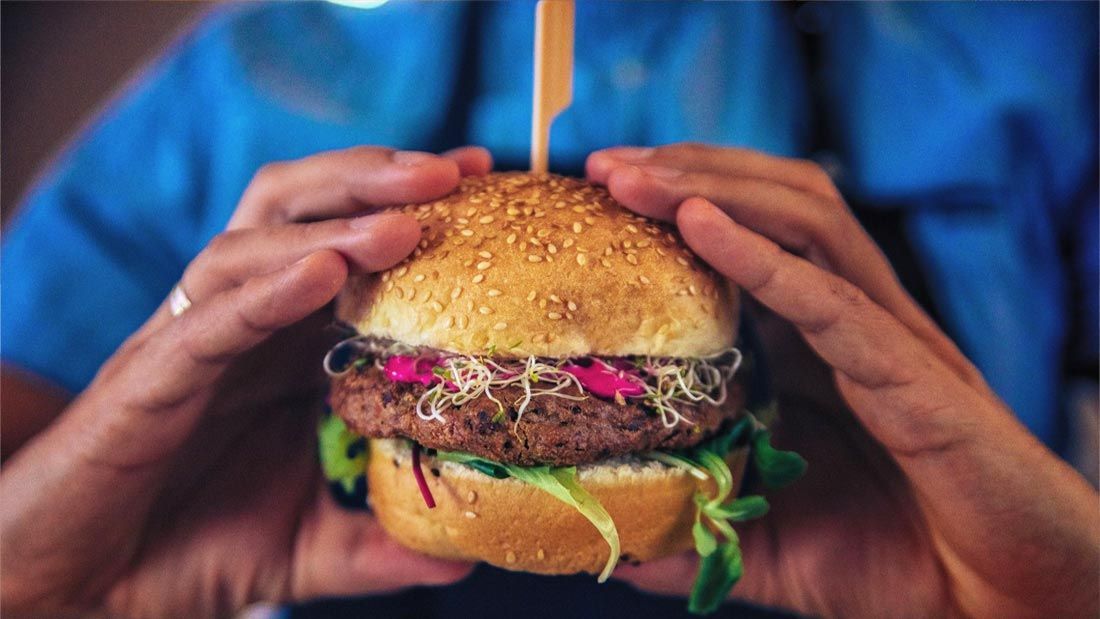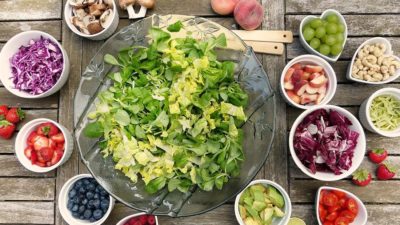Mock meats

There are more mock meat varieties coming on to the market than we can keep count of so how do you choose what to buy and what to give a miss?
Sometimes, you just want a burger and it doesn’t need to be healthy; another time, you may want a healthier type of junk food so it’s good to know what it is that makes a mock meat good for you.
What are they made of?
So what are they made of? A key question as you can find a huge variety – soya protein isolate (also called textured vegetable protein – TVP), tofu, wheat protein, pea protein, corn, mushrooms, mycoprotein, beans and grains can all be the main ingredient. The particular combination of ingredients in your mock meat largely determines how healthy it is.
Spoiler alert! They are all better than actual meat products – health-wise, ethically and environmentally!
When it comes to the ingredients, it’s not rocket science – the less processed the food is and the less saturated fat it contains, the better. But how can you tell what’s more and what’s less processed?
Protein isolate galore
Tofu is less processed than soya protein isolate so it follows that tofu sausages are healthier than TVP sausages. TVP is made from defatted soya flour – essentially a by-product of soya oil production. Whether it’s called TVP, soya protein or soya protein isolate, it’s the same thing – a processed product that is rich in protein but lacks many other nutrients found in the whole soya bean. Its advantage is that it’s cheap and provides good texture so it’s a very popular mock meat ingredient.
Many products are a mixture of soya and wheat protein, some also have pea protein for better consistency or mushrooms for flavour and texture. Of course, there’s also Quorn, which is based on a special type of mushroom protein – mycoprotein.
Mock meats not made from tofu are all based on some kind of protein isolate but that doesn’t automatically make them bad. It’s true that the more processed the original food is, the more nutrients are lost but when it comes to mock meats, they usually contain many ingredients and that’s what matters!
If in addition to protein isolates, a product also contains some wholefoods, such as beans, lentils, veggies or wholegrains, it is healthier than if it’s made of just pure protein, fat and salt. If you do go for this latter type – just protein isolate and not much else – you can make your meal healthier by adding wholefoods, rather than white bread.
What nutrients and perks do they offer?
There’s a curious advantage to mock meats – you absorb more protein from them than from wholefoods. To be precise, protein from mock meats has a digestibility of about 95 per cent, while protein from cereals and pulses has a digestibility of about 80-90 per cent. The reason is simple – the processed protein is more easily available to your body than protein tangled up with other nutrients such as in wholefoods.
Aside from being good protein sources, plant meats also contain fibre and many are good sources of B vitamins (even B12 if they’re fortified) as well as minerals such as iron and zinc. Always check the packaging for nutritional information as there are so many products on the market and their nutrient content varies considerably.
Another advantage mock meats offer is that they tend to be low in fat. Again, check the packaging and if the fat content, especially saturated fat, is low and protein high, it’s a good choice! On the other hand, if the product is high in fat – saturated fat in particular – put it back and pick something else. Avoiding saturated fat protects your blood vessels and heart. Products are considered high-fat if they contain more than 17 grams of fat per 100 grams.
What do they lack?
Mock meats lack cancer-causing chemicals typically found in meat and meat products. Cooking meat at high-temperatures also triggers the formation of additional cancer-causing compounds but this doesn’t happen with mock meats.
Some criticism of soya protein has focused on the fact that its production uses hexane, a petroleum-derived compound used to separate the soya fat from protein. Of course, it would be best if a non-oil substance was used but the truth is, the final product contains no or only the faintest trace amounts of hexane and is therefore perfectly safe to eat.
Many mock meat products don’t have much fibre and lack antioxidants but that’s easy to remedy – just eat them with wholemeal bread and fresh veggies!
A note on your fruit and veg intake – mock meat products, even if they contain some beans, onions or peppers (as do some burgers and sausages), do not count towards your vegetable intake as they contain too little for it to be considered a serving.
What to avoid
If you have food sensitivities or allergies, be careful. There are gluten-, nut- and soya-free mock meats so you can usually find a burger that’s safe for you.
Some people have digestive issues with mycoprotein so if that’s you, avoid Quorn and other mycoprotein-based products.
In general, it’s good to avoid mock meats with high saturated fat content, artificial flavour enhancers, such as glutamate (E621), and chemical preservatives. Also watch the salt content, usually given as sodium amounts – anything under 230 milligrams of sodium per serving is considered low, while amounts reaching 920 milligrams are very high.
What’s the verdict?
Mock meats are a varied bunch but they have one thing in common – they are good protein sources. Before deciding to spend your hard-earned money on one of these products, always read the ingredients. Some of them are great and can be a part of a healthy vegan diet, others not so much.
However, as all mock meats are processed foods, you shouldn’t eat them too often. As a rule of thumb, if you have a mock meat lunch, have a wholefood-based dinner and vice versa. Wholefoods means lentils, beans, chickpeas, peas, edamame, wholegrains, vegetables, nuts and seeds.
Veggie burgers, sausages, mince or sandwich slices are convenient foods that can help you transition to plant-based diets, increase your protein intake or serve as comfort foods. Just don’t rely on them as your only source of protein.







